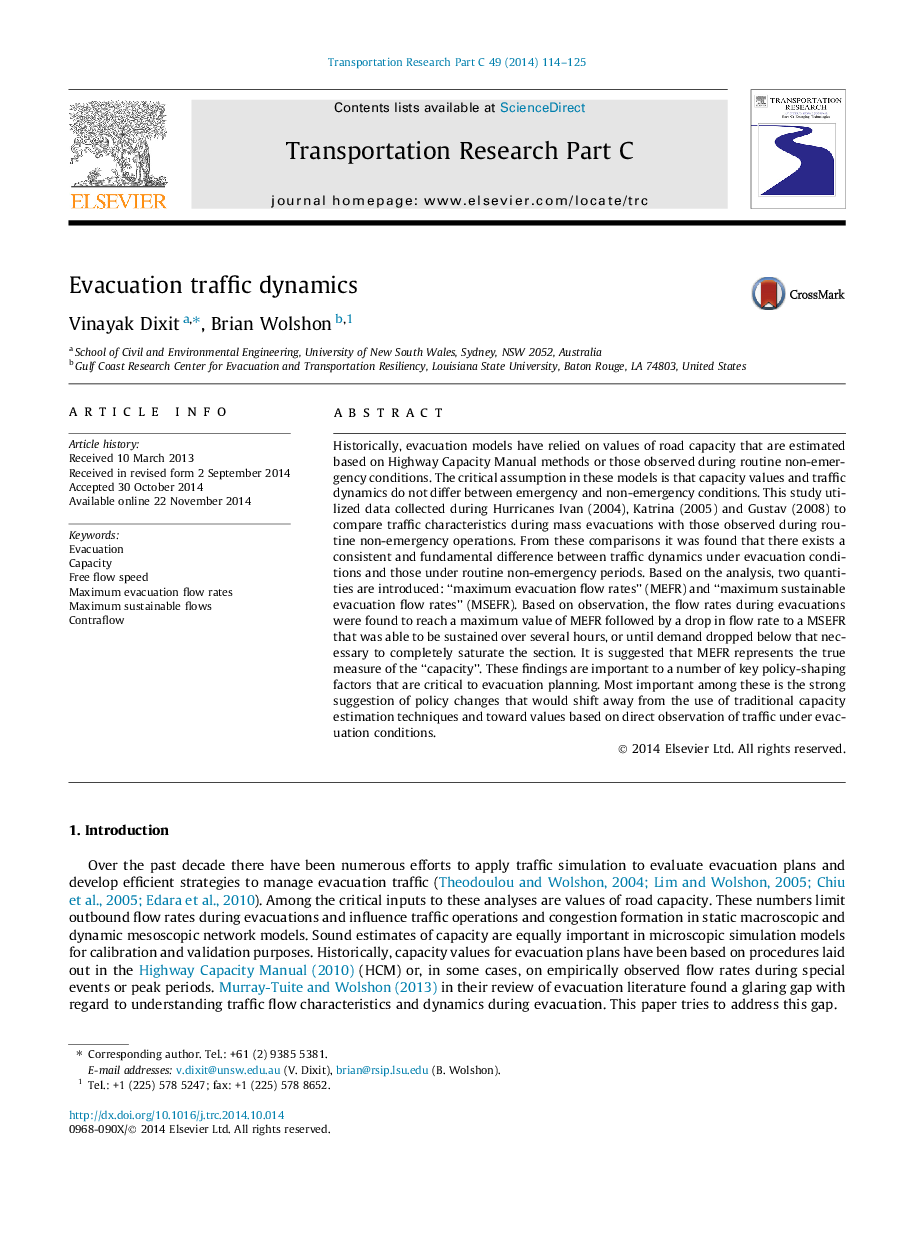| Article ID | Journal | Published Year | Pages | File Type |
|---|---|---|---|---|
| 6936892 | Transportation Research Part C: Emerging Technologies | 2014 | 12 Pages |
Abstract
Historically, evacuation models have relied on values of road capacity that are estimated based on Highway Capacity Manual methods or those observed during routine non-emergency conditions. The critical assumption in these models is that capacity values and traffic dynamics do not differ between emergency and non-emergency conditions. This study utilized data collected during Hurricanes Ivan (2004), Katrina (2005) and Gustav (2008) to compare traffic characteristics during mass evacuations with those observed during routine non-emergency operations. From these comparisons it was found that there exists a consistent and fundamental difference between traffic dynamics under evacuation conditions and those under routine non-emergency periods. Based on the analysis, two quantities are introduced: “maximum evacuation flow rates” (MEFR) and “maximum sustainable evacuation flow rates” (MSEFR). Based on observation, the flow rates during evacuations were found to reach a maximum value of MEFR followed by a drop in flow rate to a MSEFR that was able to be sustained over several hours, or until demand dropped below that necessary to completely saturate the section. It is suggested that MEFR represents the true measure of the “capacity”. These findings are important to a number of key policy-shaping factors that are critical to evacuation planning. Most important among these is the strong suggestion of policy changes that would shift away from the use of traditional capacity estimation techniques and toward values based on direct observation of traffic under evacuation conditions.
Keywords
Related Topics
Physical Sciences and Engineering
Computer Science
Computer Science Applications
Authors
Vinayak Dixit, Brian Wolshon,
